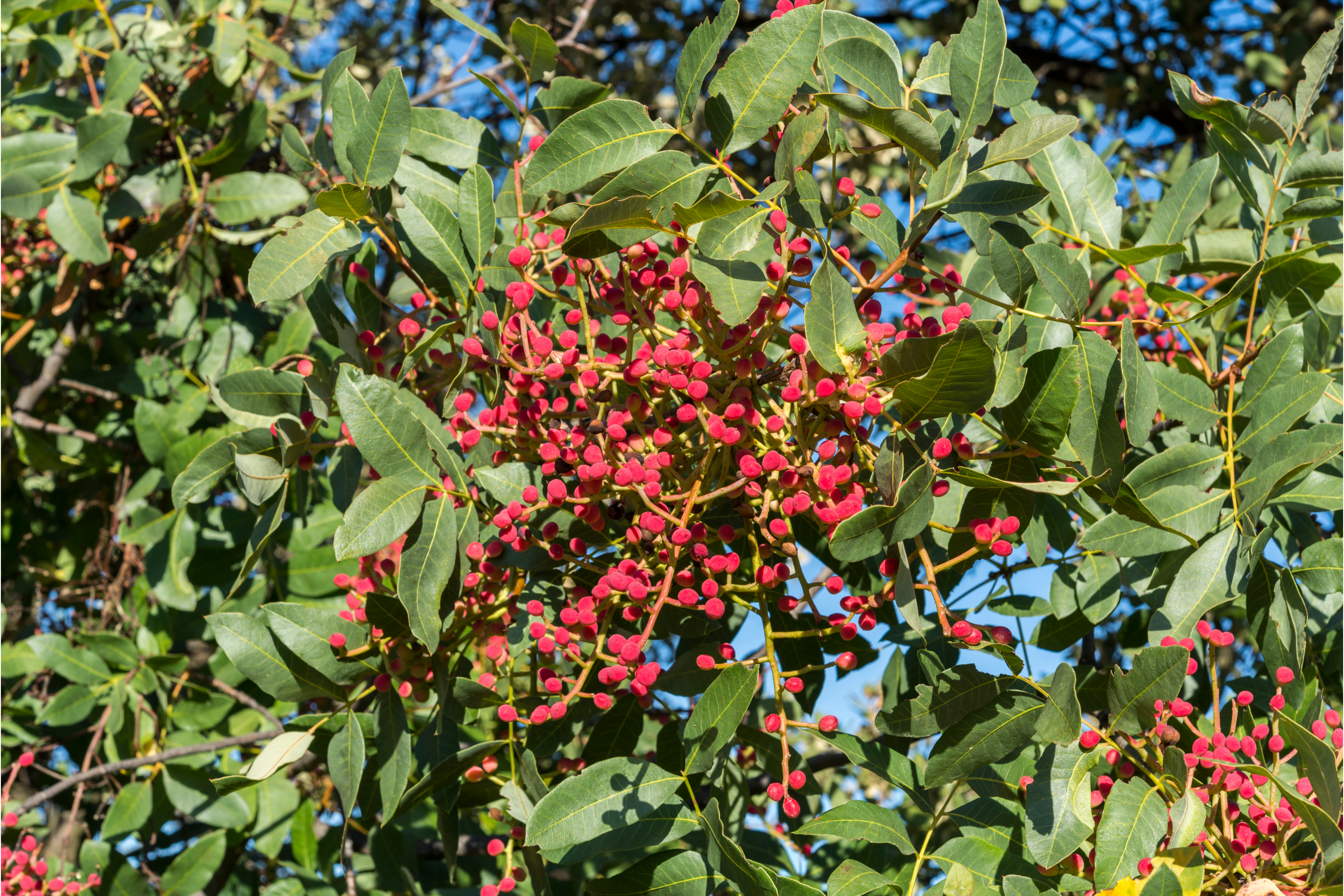Cyprus Turpentine
(Pistacia terebinthus)

Description
Pistacia terebinthus also called the terebinth and the turpentine tree, is a deciduous tree species of the genus Pistacia, native to the Mediterranean region from the western regions of Morocco and Portugal to Greece and western and southeastern Turkey and Kurdistan. At one time terebinths growing on the eastern shores of the Mediterranean Sea (in Syria, Lebanon, and Palestine region: Israel and the Palestine) were regarded as a separate species, Pistacia palaestina, but these are now considered to be a synonym of P. terebinthus. The terebinth is a deciduous flowering plant belonging to the cashew family, Anacardiaceae; a small tree or large shrub, it grows to 10 m (33 ft) tall. The leaves are compound, 10–20 cm (3.9–7.9 in) long, odd pinnate with five to eleven opposite glossy oval leaflets, the leaflets 2–6 cm (0.79–2.36 in) long and 1–3 cm (0.39–1.18 in) broad. The flowers are reddish-purple, appearing with the new leaves in early spring. The fruit consists of small, globular drupes 5–7 mm (0.20–0.28 in) long, red to black when ripe. All parts of the plant have a strong resinous smell. The terebinth is a dioecious tree, i.e. it exists as male and female specimens. For a viable population both sexes must be present. The oblong leaf is bright green, leathery, with 10 cm (3.9 in) long or more with three to nine leaflets. Leaves alternate, leathery and compound paripinnate (no terminal leaflet) with three or six deep green leaflets. They are generally larger and rounder than the leaves of the mastic, reminiscent of the leaves of carob tree. The flowers range from purple to green, the fruit is the size of a pea and turns from red to brown, depending on the degree of maturation. The whole plant emits a strong smell: bitter, resinous, or medicinal. In the vegetative period they develop "galls" shaped like a goat's horn (from which the plant gets the name "cornicabra", the common name in Spanish), that occur on the leaves and leaflets which have been bitten by insects. The species propagates by seeds and shoots. Although marred by the presence of galls, it is a very strong and resistant tree which survives in degraded areas where other species have been eliminated.
Taxonomic tree:







